Review: #21061 Notre Dame (LEGO Architecture)
Are you ready to expertly re-create an undisputed architectural masterpiece using a ton of truly tiny LEGO pieces?
#21061 Notre Dame will be released worldwide on July 1 worldwide. It costs $229.99 (229.99€ / £199.99 / 299.99 CAD / 349 AUD) for 4383 pieces, ages 18+.
This set preserves the ‘Architecture’ branding which you can see in the lower-left corner of the box, differentiating this set from some of the larger architectural sets released under the ‘Icons’ branding such as #10276 Colosseum or #10307 Eiffel Tower.
Initial Impressions
A set containing about 4000 pieces based on Notre Dame has been widely rumoured for some time, but I had heard little more than that before the set arrived in the mail. Given so little information, I was left to speculate based only on the part count and that it is in the Architecture theme. The following was written before the set arrived in the mail…
The latter is especially relevant — the LEGO Architecture series has a long history of keeping things on the smaller scale, with only three sets so far containing more than 2000 pieces, and none over 3000 pieces. This contrasts with the LEGO Icons theme, which continues the grand tradition of much larger models that began under the Creator Expert branding.
Since Notre Dame Cathedral is much longer than it is wide, I hoped to see a base that’s around 24×48 studs with very limited landscaping since it’s conveniently a roughly rectangular building. Given the proportions of the imposing front façade and tall central tower, it should almost as tall as it is long.
While I wouldn’t be surprised to see a larger base to allow for a larger model and more landscaping, I am definitely hoping for a compact, intricate model. This is especially true when compared to something huge like the Colosseum or Eiffel Tower (acknowledging that both were released under the Icons branding).
Box Contents
Upon receiving the set, I was relieved to see that there is a lot of fine detail in the exterior, but there was also a clear attempt to keep the overall size and scale somewhat reasonable. I suspect that the designers determined that this was the smallest size that they could achieve without compromising too much on accuracy.
The box is smaller than most sets with this part count and feels pretty heavy for the box size. I think this reflects The LEGO Group’s ongoing commitment to reducing packaging size to reduce the environmental impact of shipping.
I quickly noticed that this box is much different to what we’re used to seeing. Instead of a large box with glued or taped flaps on either side, this is designed like a shirt box from a fancy department store, with a top and bottom section that slide apart. Due to the large size, it has 8 taped seals on the back holding the lid in place. The edges ripple slightly due to the extremely thin cardboard that is used.
Once you open the box, you will find that the inner box has a small lip that is tucked in the corners. I strongly suspect that this extra inch of cardboard along these edges make it a lot stronger and more resistant to damage. You just need to pull gently for the corners to open up, so you can access the large box on the left, and the pile of loose bags on the right.
The box is marked 6492090 and my copy had tape seals marked 13H4, one week before the label on the outer box. This smaller white box is designed the same way as the larger one, with thin cardboard and six tape seals along the back edge. I did not appreciate that the pouch containing the instruction booklet is at the bottom, but I guess that helps protect it.
All of the bags still used the clear plastic bags which The LEGO Group is trying to phase out. For reasons that I cannot understand, the bags inside and outside of the smaller box seem completely random. In the white box, you will find bags numbered 1, 2, 3, 4, 6, 8, 15, 16, 18, 22, 23, 24, 26, 30, 31, 34, and a pouch containing the instruction booklet. This leaves a similarly random selection of bags that were loose in the outer box: 5, 7, 9, 10, 11, 12, 13, 14, 17, 19, 20, 21, 25, 27, 28, 29, 32, 33.
Build Process
Bags 1-9: East Side
The first bag will be familiar to anyone who has ever built a set in the LEGO Architecture series — we create a sturdy base that is three layers thick with a border using black tiles. What’s different is that it is already a pretty large platform, but it is only a small section of the completed model whereas in most sets you build the entire platform before you construct the building on top. This section alone is 29×28 studs.
The second bag adds an elegant black and white tile floor arranged in a diamond or ‘on point’ pattern. This looks great along the central aisle, with the pattern disrupted on the sides by a grid of 1×1 Round Plate w/ Bar (Part 20482), where I expect that the pews will be attached.
Bag 3 is all about the curved wall in the back of the Nave, which is also called the Apse. This is well executed with 12 facets in a 180° curve. It is built using alternating layers of six 1×4 Hinge Plate (Part 1927) with windows, an arched roof, and tiny buttresses between each column.
We open both bags 4 and 5 at the same time. They contain the parts needed to add two rows of columns on either side of the central atrium, as well as the outer walls on either side. I discovered that that the grid of 1×1 Round Plate w/ Bar we added in Bag 2 weren’t for pews — they are where the columns attach! I’m reminded of the sheer scale of the cathedral (which I visited many years ago) when seeing that it has so many columns supporting the massive roof. This allows for a much wider nave than a church with just one row of columns on either side.
The sixth bag adds two additional rings of curved walls in the back of the cathedral. While the instructions encourage you to build this as small sub-assemblies which you add as you go, I built it as a larger sub-assembly which I carefully added at the end because I thought it would result in a better photo showing how it goes together. I do not recommend this, since it was difficult to slide the assembly into place since it is built out of wiggly hinges.
Bag 7 adds the inner ring of walls flanking the very tall central nave that runs the length of the cathedral. The highlight is at the end of this bag, where we use 16x Droid Arm, Straight (Part 59230) to create slender flying buttresses adding lateral support to the tall inner walls. This was the first time in the build where I am getting the expansive emotional feel that gothic architecture often evokes. The next row of walls reaching towards the sky starts off pretty wobbly near the end of the nave, but we lock it all in place with two layers of hinges near the end of bag 8.
We finish this section of the model in bag 9, where we add a small roof to this end of the building. Afterwards, we add another row of buttressing all the way around the curved back and sides. I’m impressed with how it looks so far!
Build Time: 128 minutes. (Bag 1: 11 minutes, Bag 2: 9 minutes, Bag 3: 27 minutes, Bags 4 & 5: 14 minutes, Bag 6: 18 minutes, Bag 7: 18 minutes, Bag 8: 14 minutes, Bag 9: 17 minutes.)
Bags 10-14: Transept and Bays
Bag 10 doubles the size of our base by creating a similar base to the one we created in bag 1. Near the end of this bag, we attach the new base to the section we created up to this point. I can already tell that it is going to be a large model but is a lot smaller than something like the Eiffel Tower or Colosseum.
The Eleventh Bag continues the tile flooring we started in bag 2, and has the same patterning interspersed with spots for the columns to attach later. Bag 12 is also very quick, since it only includes the parts needed to create a pair of fancy 154Dark Red doors for both sides of the building.
The 13th bag extends the walls on either side of the cathedral. We add seven windows on each side using the same techniques we used earlier in the build process. Bag 14 continues by adding the ground floor of the cathedral’s front side.
The columns have not been attached to one another yet and the front isn’t decorated yet — this doesn’t feel like a great place to stop the second stage of the build process. I think they decided to stop here so you can see all the columns arranged on this end of the building before covering them up in the next bag.
Build time: 51 minutes. (Bag 10: 14 minutes, Bag 11: 11 minutes, Bag 12: 7 minutes, Bag 13: 10 minutes, Bag 14: 9 minutes)
Bags 15-22: Complete Floorplan
In Bag 15, we add three archways to the front façade, and sections of exposed SNOT studs along the front and sides. After that, we build a series of interior archways connecting the columns we built earlier. Finally, we attach everything on both sides of the aisle with 138Sand YellowDark Tan plates.
The sixteenth bag adds a black sloped roof for the two sides, although it is almost completely covered by the buttresses we will add immediately thereafter. Then, we build a row of higher windows on both sides of the tall central aisle, and six buttresses on either side to hold them up.
Bag 17 adds additional detailing to the three archways on the front of the building and additional columns above the central aisle. Bag 18 is more interesting, since this is when we build a pair of intricately detailed modules containing rose windows which we install above the doors on both ends of the transept (the section of the cathedral that bisects the main aisle, causing the building to have a cruciform – or cross-shape.)
The nineteenth bag adds the upper row of windows and the arches that cover them. The one thing that I do not like is that you cannot see into the cathedral very easily now that the arches are in place, and this section is not removeable so you can see it again easily.

In this bag, we add the arches that partially obscure the aisle and the tiny windows on either side.
After adding a few plates and a railing at the beginning of Bag 20, it’s all about buttresses. A total of 14 modules support the tall inner walls. Bag 21 adds additional height to the two bell towers flanking the front entrance. We also build a pair of sub-assemblies that serve as sturdy supports that hold up the towers on both sides.
Bag 22 ties everything we’ve done over the past couple bags together. This includes stair-stepped supports along the walls, tightening up the roof structure, and adding the rose window to the front entrance. The lower floors of the cathedral are looking good as we get ready for the next phase of the build process.
Build time: 97 minutes. (Bag 15: 14 minutes, Bag 16: 16 minutes, Bag 17: 9 minutes, Bag 18: 13 minutes, Bag 19: 13 minutes, Bag 20: 10 minutes, Bag 21: 10 minutes, Bag 22: 12 minutes)
Bags 23-30: Roof and Front Towers
We begin the second to last phase of the project with Bag 23. This is a pretty quick bag where we create a 4-stud tall module that increases the height of the two iconic towers on the front of the building.
Moving on to Bag 24, we start with an aesthetically pleasing and unique technique involving a ton of magic wands. They need to be painstakingly installed at a 45-degree angle to create the desired effect. It’s time consuming but worth it.
Bag 25 adds the other section of the roof, which we attach to the part we built much earlier. At least for now, it is pretty easy to remove and re-attach the roof so you can see inside.
The next addition to the height of the tower is extremely intricately built. This begins in bag 26 where we build an upside-down assembly with a ridge of outward-facing 45° 1×1 Double Slope (Part 35464). After that, we open both bags 27 and 28 to finish the two sub-assemblies. These are also intricate, with a ridged section using black parts that is recessed behind the corners which are decorated using 1×2 Tile, Grille (Part 2412).
We complete this stage using bags 29 and 30 to finish the towers. This part is pretty quick, using 1×1 Round Plate w/ 1L Handle (Part 32828) around the edges for additional rain spouts and 1×4×1 Fence, Lattice (Part 3633) along the top edge.
We continue with two triangular modules that attach above the north and south transept, completing the roofline. They are assembled vertically, then bent into the right angle after attaching the roof section.
Build time: 73 minutes. (Bag 23: 8 minutes, Bag 24: 14 minutes, Bag 25: 5 minutes, Bag 26: 8 minutes, Bags 27 & 28: 21 minutes, Bags 29 & 30: 17 minutes)
Bags 31-34: Detailing and Spire
It’s time for the last four bags, which we build in just two phases. We use bags 31 and 32 to add a bunch of small but important decorative flourishes all over the exterior. This is done later in the build process to mimic how these additional decorations were added to the building after the main structure was complete. Most notable are the many spires adorning the top of the buttresses, especially around the back of the model.
Finally, we use the parts in bags 33 and 34 to do two things… First we create a row of trees along the south-facing side of the building. It is appropriate to only have trees on the one side, since the building is usually photographed from this side since that’s the side facing the river Seine. (The other side faces buildings on the small island where it is located.) The trees use the same attractive but time-consuming (and finger-numbing) technique used for Himeji Castle.
We complete the model by building an intricate spire that attaches to the roof at the intersection of the main aisle and the transept. This dramatic detail on the real building was built in 1859 and destroyed in 2022 in a devastating fire. It has been rebuilt in the same style.
Build time: 36 minutes. (Bags 31 & 32: 21 minutes, Bags 33 & 34: 15 minutes)
Value
If you’ve made it this far, you’ve probably already figured out that this set contains a ton of tiny LEGO elements to achieve all of the intricate details required in this set. This does result in an excellent price-per-part, but as I’ve discussed many times, this metric doesn’t take into account the fact that smaller pieces aren’t worth as much as larger ones!
| LEGO Set | Price | Part Count | Price-per-part | Weight | Price-per-gram |
|---|---|---|---|---|---|
| #31203 World Map | $249.99 | 11,695 pieces | $0.021 per-piece | 4020 grams | $0.062 per-gram |
| #21056 Taj Mahal | $119.99 | 2022 pieces | $0.059 per-piece | 1811 grams | $0.066 per-gram |
| #21058 Great Pyramid of Giza | $129.99 | 1476 pieces | $0.088 per-piece | 1832 grams | $0.071 per-gram |
| #10278 Police Station | $199.99 | 2923 pieces | $0.068 per-piece | 2602 grams | $0.077 per-gram |
| #71799 Ninjago City Markets | $369.99 | 6163 pieces | $0.06 per piece | 4770 grams | $0.078 per-gram |
| #71741 Ninjago City Gardens | $299.99 | 5685 pieces | $0.052 per piece | 3719 grams | $0.081 per-gram |
| #71043 Hogwarts Castle | $399.99 | 6020 pieces | $0.066 per-piece | 4899 grams | $0.082 per-gram |
| #10292 Friends – The Apartments | $149.99 | 2048 pieces | $0.073 per-piece | 1778 grams | $0.084 per-gram |
| #10297 Boutique Hotel | $199.99 | 3066 pieces | $0.065 per-piece | 2380 grams | $0.084 per-gram |
| #21343 Viking Village | $129.99 | 2103 pieces | $0.062 per piece | 1448 grams | $0.090 per-gram |
| #42639 Andrea’s Modern Mansion | $199.99 | 2275 pieces | $0.088 per piece | 2116 grams | $0.095 per-gram |
| #10312 Jazz Club | $229.99 | 2899 pieces | $0.079 per-piece | 2392 grams | $0.096 per-gram |
| #10270 Bookshop | $199.99 | 2504 pieces | $0.080 per-piece | 2085 grams | $0.096 per-gram |
| #10332 Medieval Town Square | $229.99 | 3304 pieces | $0.0696 per piece | 2249 grams | $0.102 per-gram |
| #21061 Notre Dame (this set) | $229.99 | 4383 pieces | $0.052 per piece | 2253 grams | $0.102 per-gram |
| #10282 Adidas Originals Superstar | $79.99 | 731 pieces | $0.109 per-piece | 735 grams | $0.109 per-gram |
| #10316 Rivendell | $499.99 | 6167 pieces | $0.081 per piece | 4375 grams | $0.114 per-gram |
| #10305 Lion Knights’ Castle | $399.99 | 4514 pieces | $0.089 per piece | 3265 grams | $0.122 per-gram |
| #10303 Loop Coaster | $399.99 | 3756 pieces | $0.106 per-piece | 3189 grams | $0.125 per-gram |
| #42179 Planet Earth and Moon in Orbit | $74.99 | 526 pieces | $0.143 per piece | 551 grams | $0.136 per-gram |
| #75290 Mos Eisley Cantina | $399.99 | 3187 pieces | $0.126 per piece | 2521 grams | $0.158 per-gram |
When we look at price-per-gram as a more objective proxy for value, we see that this set is actually a little below average. I do think it is acceptable for the building experience you get, but it is not the exceptional value it appears to be based on the large number of pieces shown on the box.
| Set | Price | Part Count | Price-per-part | Price-per-gram | Build time | Price-per-minute |
|---|---|---|---|---|---|---|
| #31203 World Map | $249.99 | 11,695 pieces | $0.021 per-piece | $0.062 per-gram | 613 minutes | $0.41 per-minute |
| #21061 Notre Dame (this set) | $229.99 | 4383 pieces | $0.052 per-piece | $0.102 per-gram | 385 minutes | $0.60 per-minute |
| #10325 Alpine Lodge | $99.99 | 1517 pieces | $0.070 per-piece | $0.095 per-gram | 151 minutes | $0.66 per-minute |
| #21056 Taj Mahal | $119.99 | 2022 pieces | $0.059 per-piece | $0.066 per-gram | 177 minutes | $0.68 per-minute |
| #10297 Boutique Hotel | $229.99 |
3066 pieces | $0.075 per-piece | $0.097 per-gram | 333 minutes | $0.69 per-minute |
| #21060 Himeji Castle | $159.99 | 2125 pieces | $0.075 per-piece | $0.100 per-gram | 210 minutes | $0.76 per-minute |
| #10307 Eiffel Tower | $629.99 | 10,001 pieces | $0.063 per-piece | $0.092 per-gram | 803 minutes | $0.78 per-minute |
| #10312 Jazz Club | $229.99 | 2899 pieces | $0.079 per-piece | $0.096 per-gram | 295 minutes | $0.88 per-minute |
| #21058 Great Pyramid of Giza | $129.99 | 1476 pieces | $0.088 per-piece | $0.071 per-gram | 146 minutes | $0.89 per-minute |
| #10320 Eldorado Fortress | $214.99 | 2509 pieces | $0.087 per-piece | $0.098 per-gram | 260 minutes | $1.01 per-minute |
| #10303 Loop Coaster | $399.99 | 3756 pieces | $0.106 per-piece | $0.125 per-gram | 378 minutes | $0.106 per-minute |
| #21344 The Orient Express | $299.99 | 2540 pieces | $0.118 per-piece | $0.128 per-gram | 248 minutes | $1.21 per-minute |
| #10326 Natural History Museum | $299.99 | 4014 pieces | $0.074 per-piece | $0.090 per-gram | 213 minutes | $1.30 per-minute |
| #42146 Liebherr Crawler Crane LR 13000 | $699.99 | 2883 pieces | $0.243 per-piece | $0.137 per-gram | 467 minutes | $1.50 per-minute |
On the other hand, if you want to optimize for a longer building experience, this set is a real winner. It took me 6:25 to build the complete set, which is only about an hour shorter than the #42146 Liebherr Crawler Crane LR 13000 — which costs three times as much!
Conclusion
After factoring in the build time, the part count, price, and the quality of the finished model — this set is a real winner! I was nervous that it would be too large and not feel like it belongs in the LEGO Architecture series, but it feels like a natural extension of that line.
In my mind, the LEGO Architecture series is about making a model of a building that is as small as possible while capturing the building’s essence. Notre Dame is a massive building that is one of the most iconic examples of Gotic architecture, which is known for it’s soaring slender towers, large windows and airy interiors, which are made possible by flying buttresses that transfer the heavy loads away from the inner walls. I worry that anything smaller than this model would have compromised on the intricate detailing that is central to the style.
Religion
One issue that must be discussed is the subject matter — The LEGO Group has famously avoided creating sets based on religion, modern warfare, or other potentially sensitive topics. We need to go back to 1957 for the previous set that prominently features a religious structure: the aptly-named #1309 Church. There is a more recent example that’s a bit less prominent… 2016’s #21026 Venice Skyline includes a tiny brick-built version of St Mark’s Basilica and Campanile.
I do not mind the decision to re-create a religious structure as a LEGO set, especially given the global prominence of the structure. A building as iconic as Notre Dame draws visitors of all faiths from all over the world to marvel at it’s scale and beauty. My only reservation is that The LEGO Group tends to be risk averse, and I don’t think they would be as willing to create a set based on similarly famous buildings from other religious traditions. A willingness to explore certain faiths while avoiding others is emblematic of the deep-seated unconscious bias within our global community.
Realism
I’m pleased to see that the model is quite accurate as well… Both the real building and the model have seven buttresses between the front towers and the doors on the ends of the trancept, five along the straight section leading up to the curved section, and only a small change to the number of buttresses as we work our way around the curved section in the back.

The buttressing in the rear of the building doesn’t exactly match the spacing and the windows don’t line up with the real building.
The model has the same four tall buttresses as the real building, but they should be evenly spaced with 2 smaller buttresses in-between each large one. Instead, we have four spots with just one, and three small buttresses at the rear of the model. I can live with these tradeoffs, which were likely required to keep the curvature right given the limitations of available LEGO elements and the quirks of their proportions.
Reflections
The only thing that I can really think of to improve the set within the limitations of available LEGO parts would be to make it possible to remove more of the roof to reveal the full size of the interior instead of just peeking down to see the central aisle. Perhaps another approach would be to make the front of the building removeable so you can see the full length of the interior. None of these ideas detract from the set which is excellent as-is.
I am completely satisfied with the model — it remains faithful to original structure, looks fantastic, offers an engaging build process, and represents a very good value overall.
That’s why I’m thrilled to give this set top marks — It’s a Must Have set, earning our coveted 5/5 star rating! The exceptionally hig level of detailing coupled with the relatively reasonable completed size means that this model is likely to provide pleasure both during the build process, and as an very attractive piece of decor for your home or office.




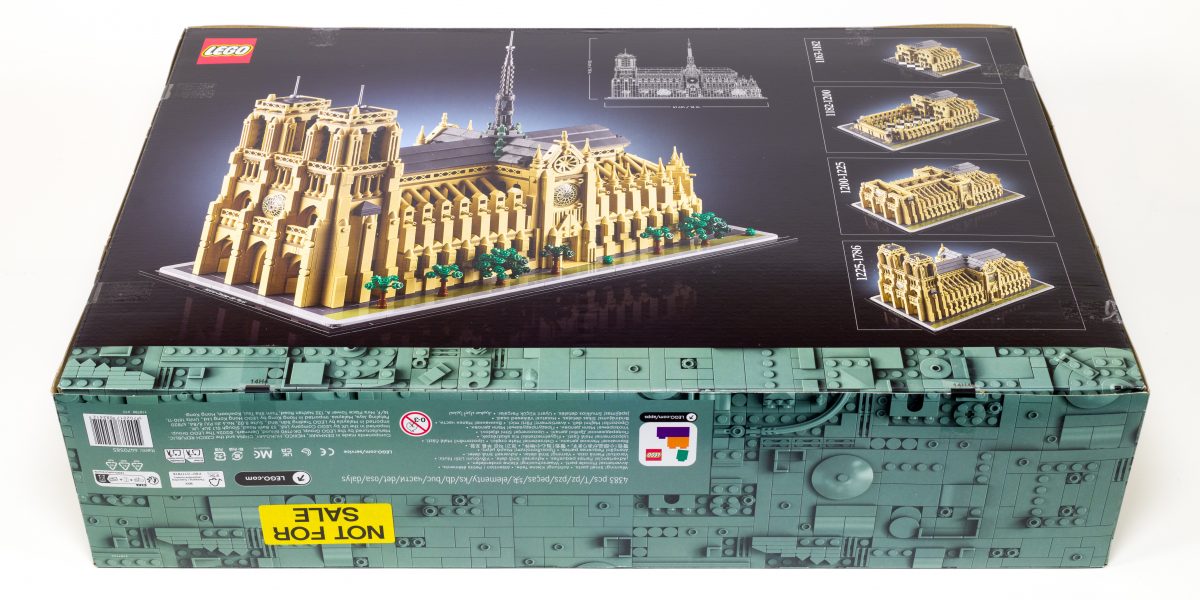

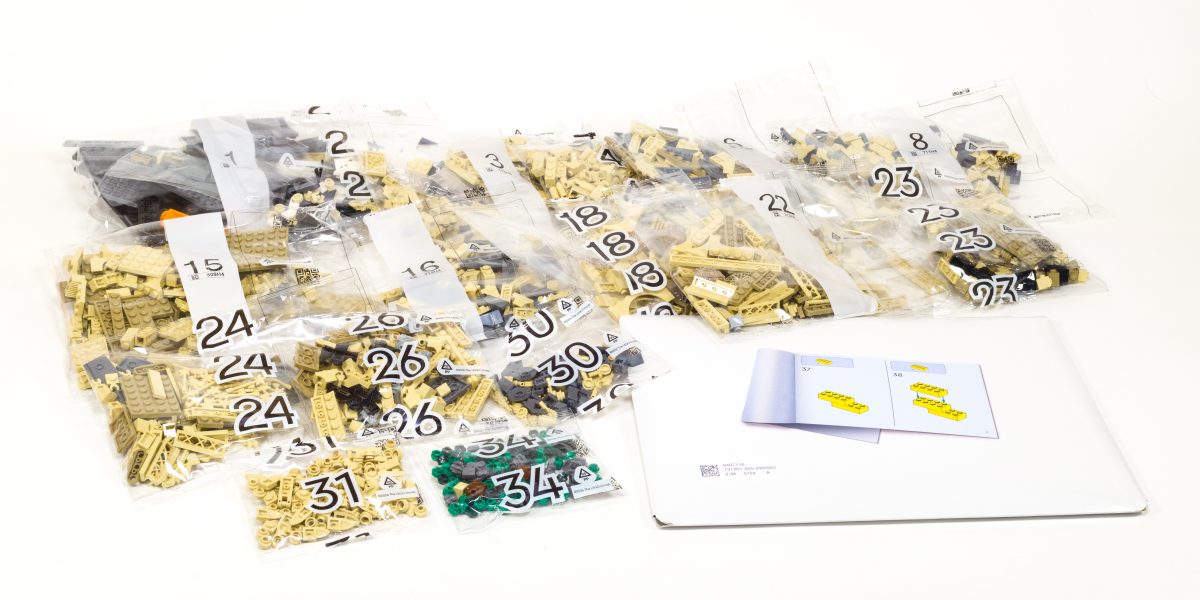
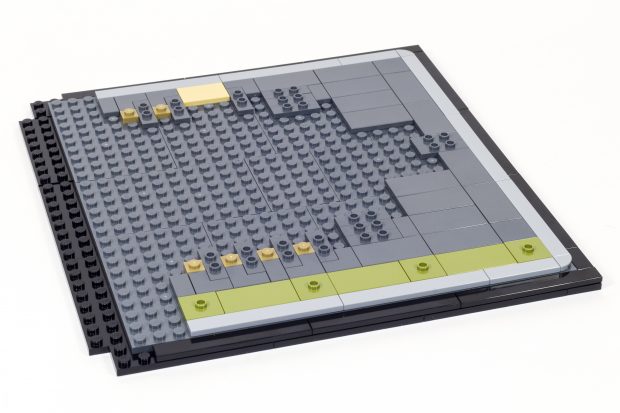
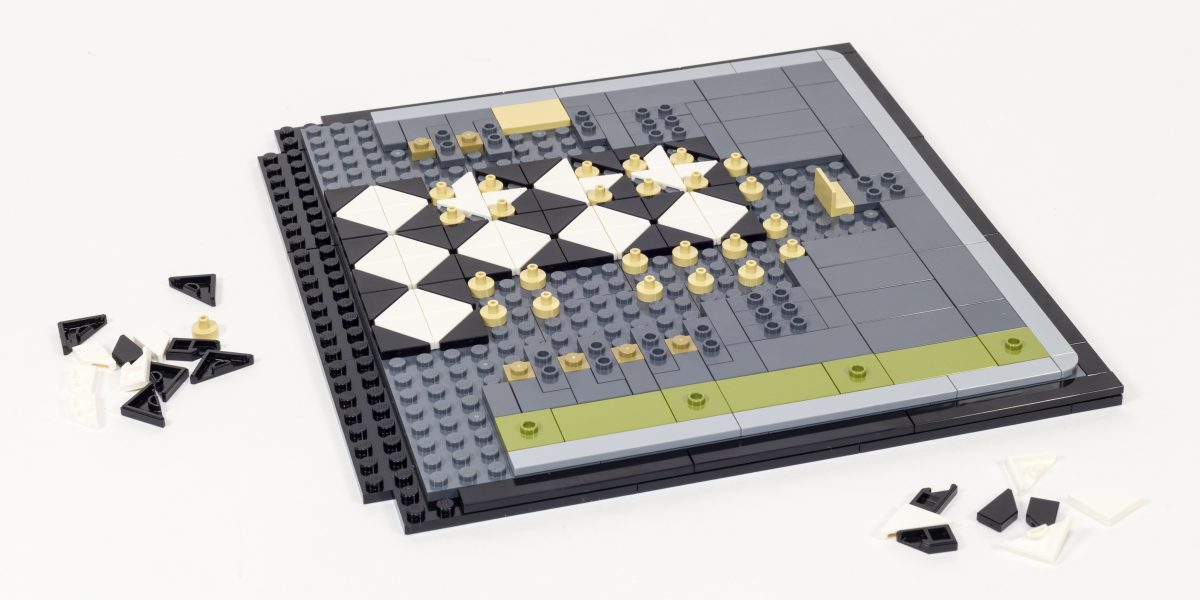

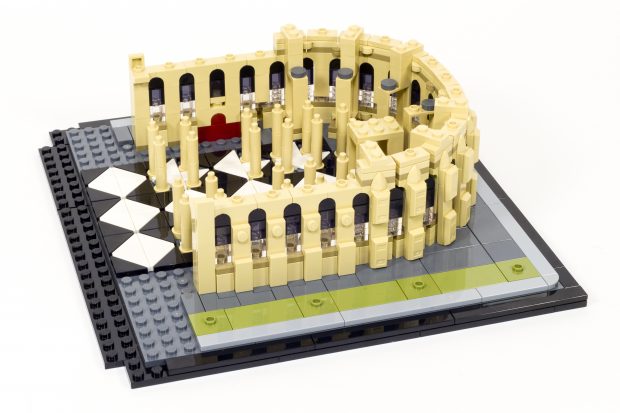


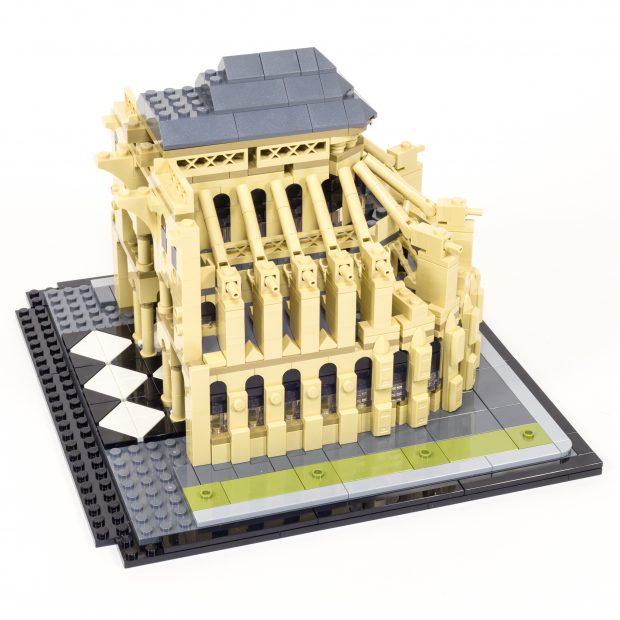
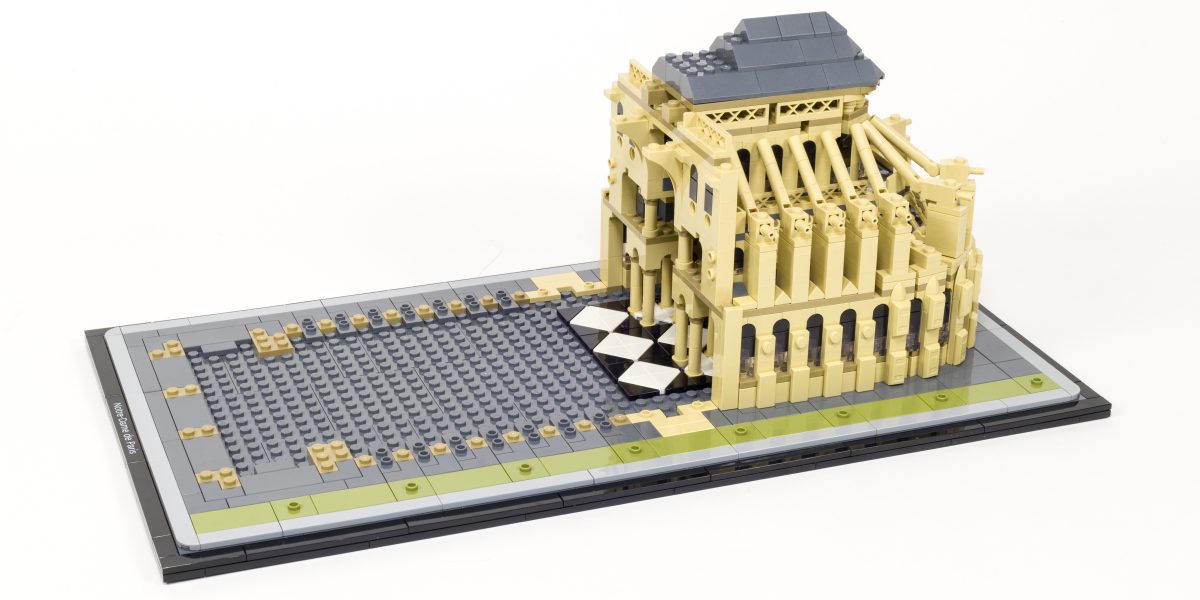
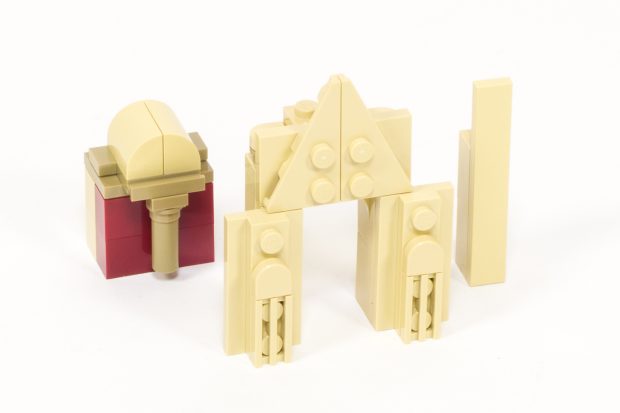
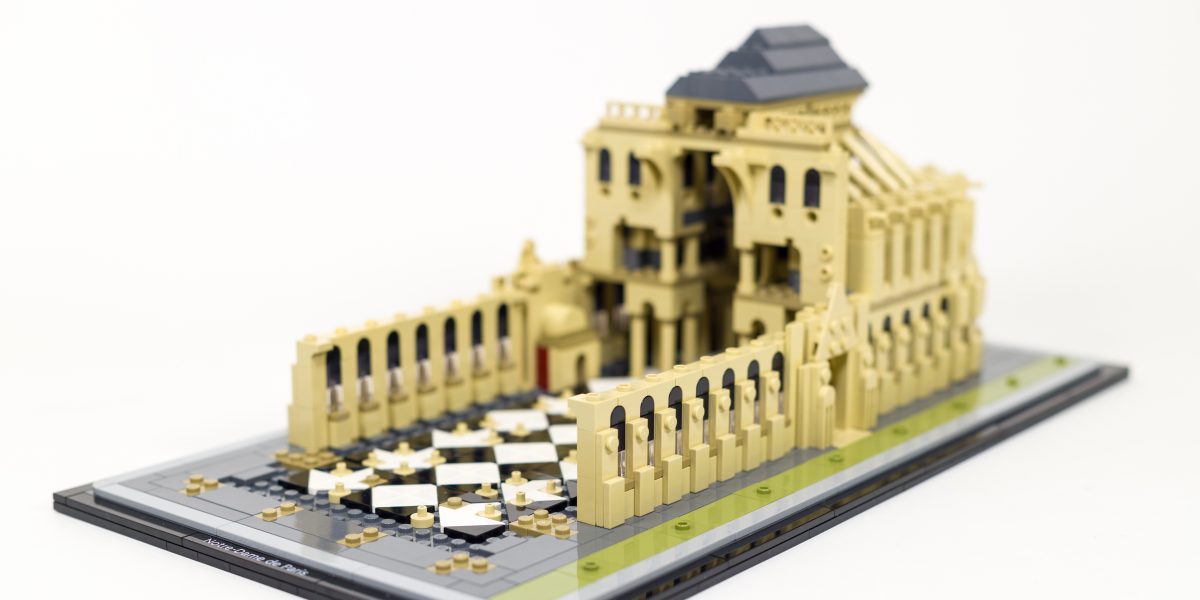
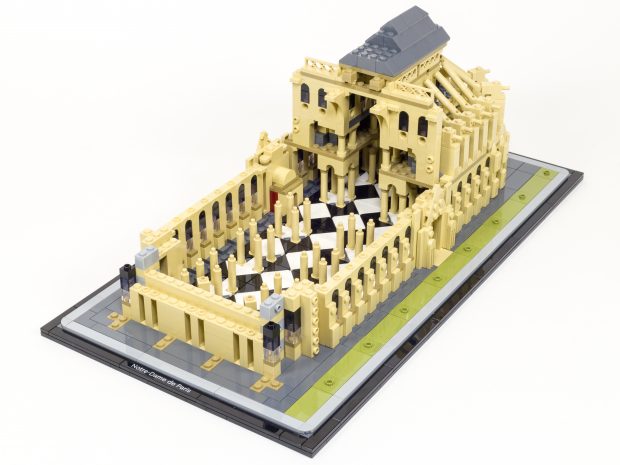


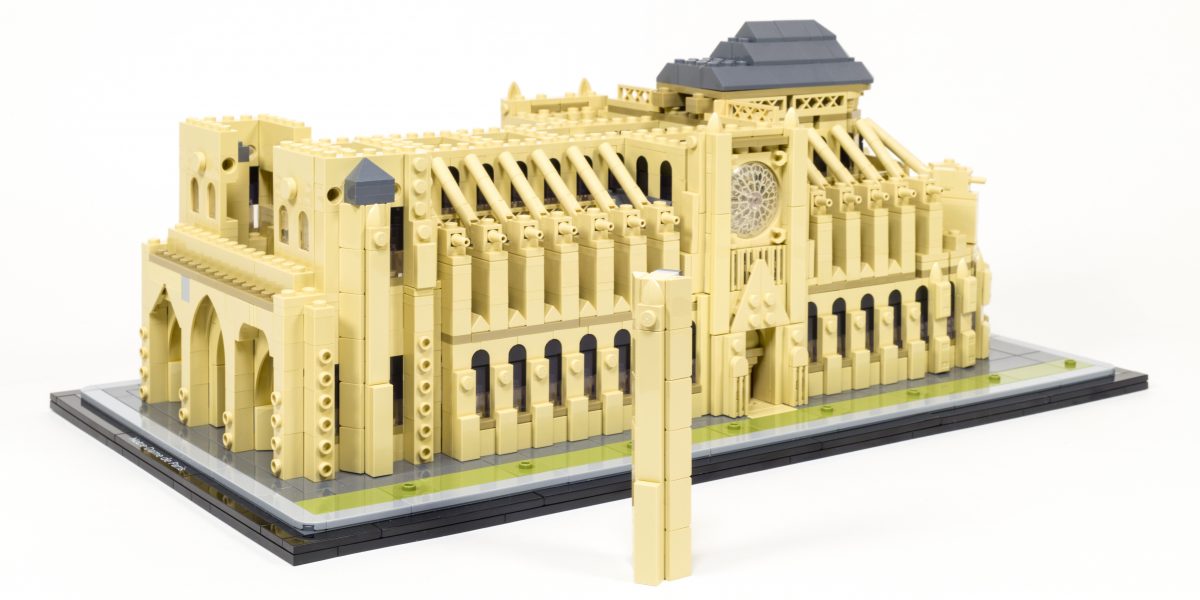

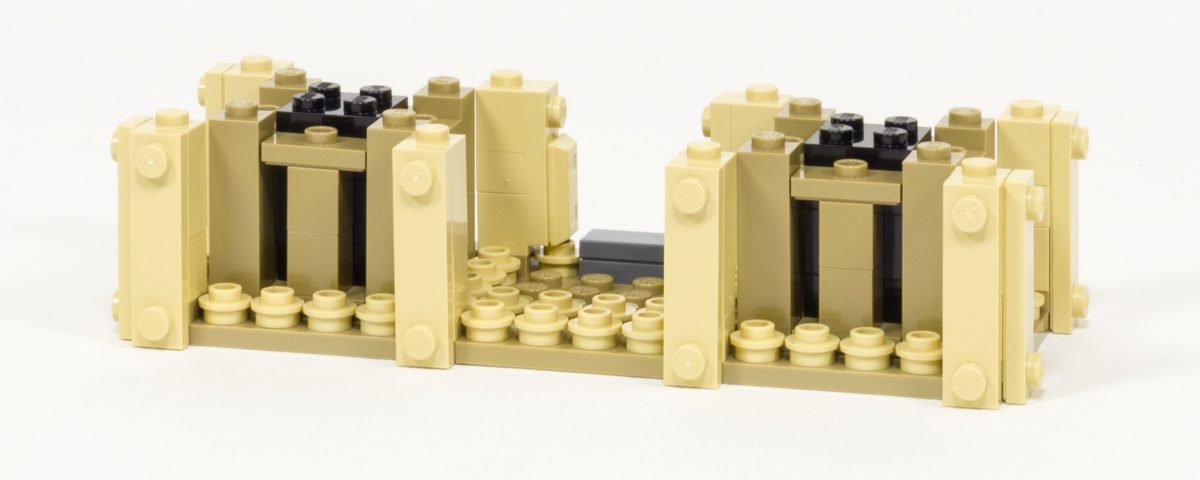
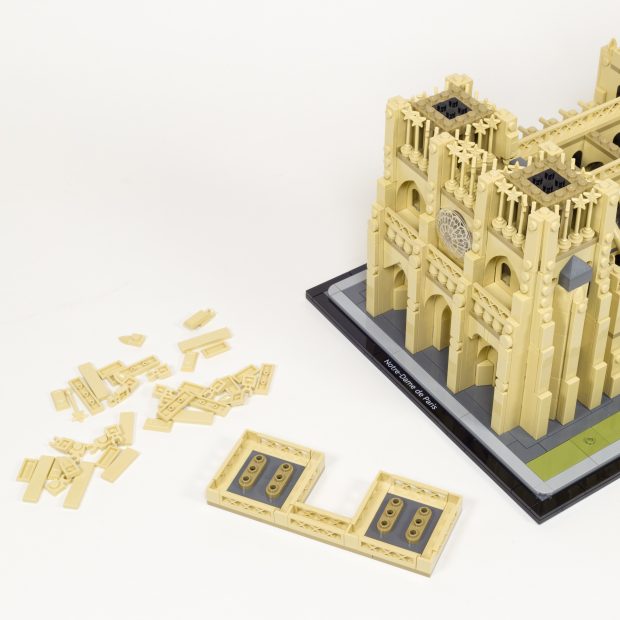
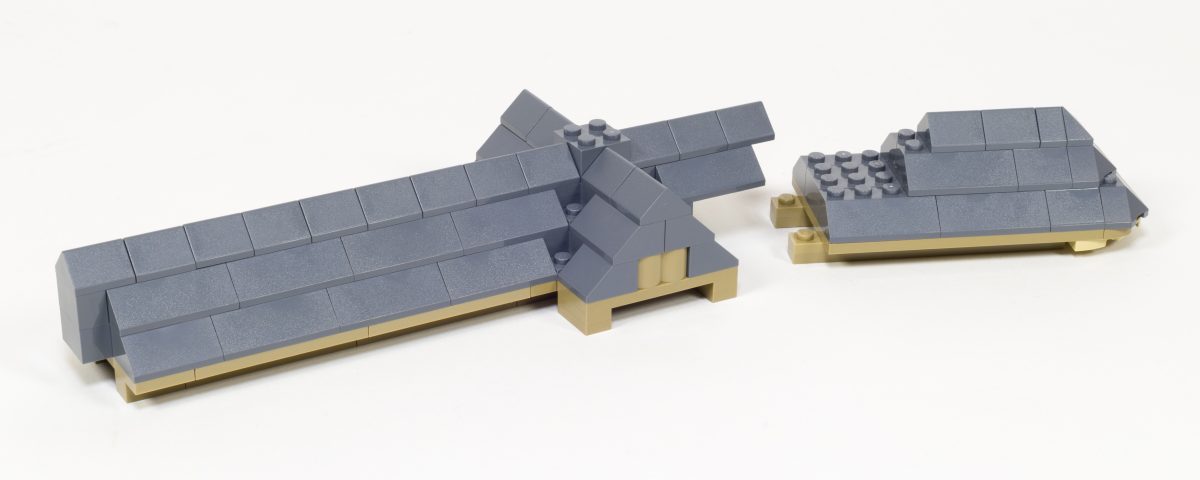



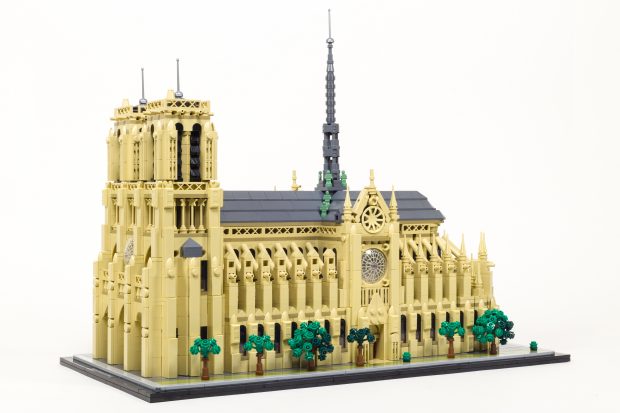


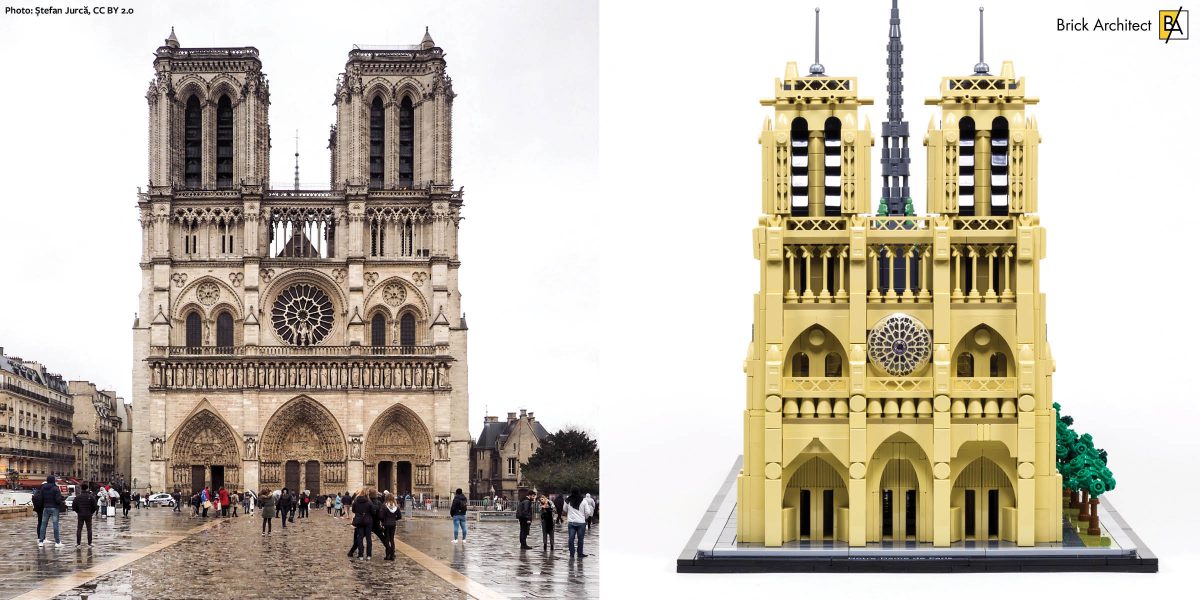

It was a great idea to replicate the historical development of Notre Dame from East to West (choir -> towers) in the building instructions. My respect for the medieval builders who diligently worked on a structure they would not see completed in their lifetime has grown. I was slightly disappointed that neither bells nor organ are part of the model, otherwise almost perfect.
Igor. Wasn’t your hump on the other side
Gene Wilder to Marty Feldman
Marty Feldman did that as a joke, and not only did they keep Gene Wilder’s line, but then they also kept switching the hump around as a running gag.
While I agree with your sentiment about Lego group probably not being as willing to recreate structures from other religions, is the Taj Mahal not a religious structure? Change recreated it multiple times so I do think that as of right now, they’re pretty fair. If they go on to create anymore religious structures I would hope to see another religion represented. In interest of fairness and equality.
Very impressive set. I planned to build it but am put off by the absence of gargoyles.
me too! first thing i looked for. disappointing
Just to add to your list of religious buildings: The leaning tower of Pisa (21015) also qualified. Although it is not a complete church it is the clock tower of the Pisa cathedral.
I have to admit I was not aware of Lego’s hesitation to use religious buildings. However, I agree with your assumption that non-Chrsitian ones may even be seen more critical. Anyway, Notre Dame definitely deserves becoming a Lego model.
Just to correct myself: The leaning tower is a bell tower (campanile) – not a clock tower.